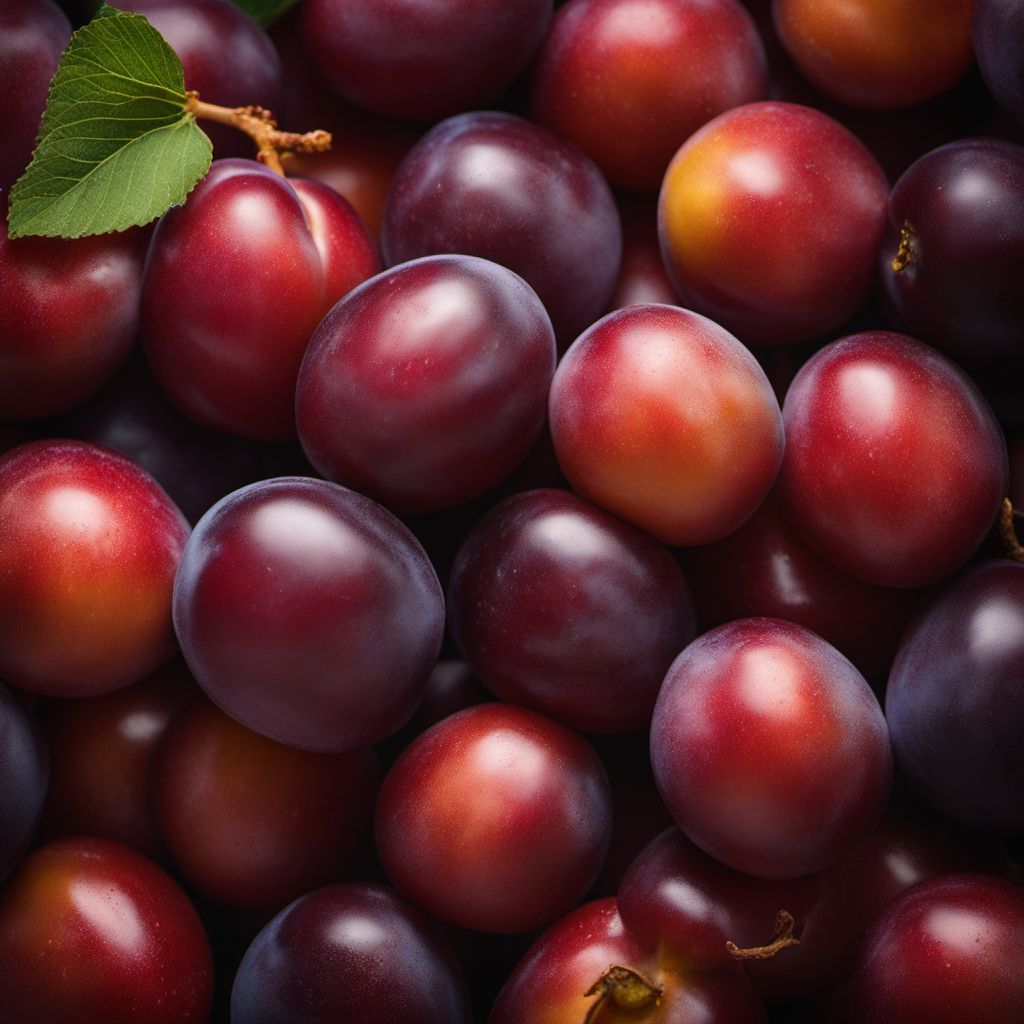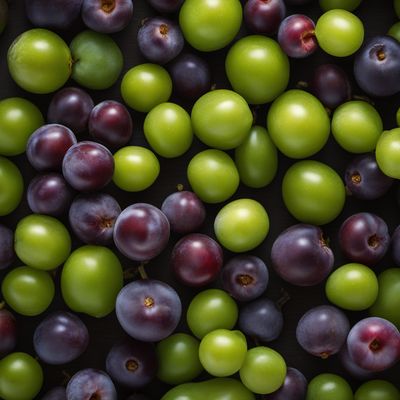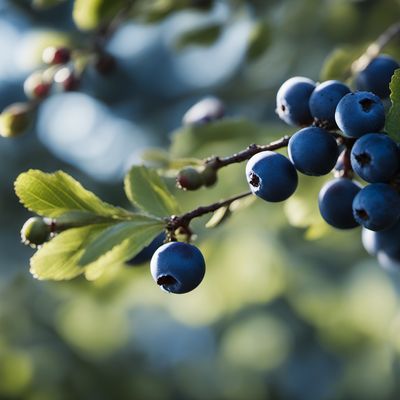
Ingredient
Plums and similar-
The Versatile Stone Fruit
Plums and similar fruits come in various colors, including red, yellow, and purple, with juicy flesh and a sweet-tart flavor. They have a smooth skin and a firm yet tender texture, making them perfect for eating fresh, baking, or preserving. Plums are often used in jams, pies, salads, and even savory dishes like roasted meats.
Origins and history
Plums have been cultivated for thousands of years and have a rich history in various cultures. They are believed to have originated in China and spread to Europe and other parts of the world through trade routes. Plums hold cultural significance in many countries, symbolizing fertility, abundance, and good fortune.
Nutritional information
Plums are low in calories and a good source of vitamins A and C, as well as dietary fiber. They also contain antioxidants that help protect against cell damage.
Allergens
Plums may cause allergic reactions in some individuals, particularly those with a known sensitivity to stone fruits. Symptoms may include itching, swelling, or difficulty breathing.
How to select
Choose plums that are firm but yield slightly to gentle pressure. Look for plums with vibrant colors and avoid any that have soft spots or bruises. The skin should be smooth and free from blemishes. Additionally, the fruit should have a sweet aroma.
Storage recommendations
Store plums at room temperature until they are fully ripe, then refrigerate them to prolong their freshness. Keep them in a perforated plastic bag to prevent moisture buildup. Use ripe plums within a few days, but unripe ones can be stored for up to a week.
How to produce
Plums can be grown in home gardens or orchards with proper care. They require well-drained soil, full sun exposure, and regular watering. Pruning is necessary to maintain the tree's shape and promote fruit production. Plums can be propagated from seeds or purchased as young trees from nurseries.
Preparation tips
Plums can be enjoyed fresh as a snack, added to salads for a burst of sweetness, or used in a variety of desserts such as pies, tarts, and cobblers. They can also be cooked down into jams, jellies, or sauces. In savory dishes, plums pair well with roasted meats or can be used to make tangy chutneys or glazes.
Culinary uses
Plums are commonly used in various cuisines around the world. They are a staple in Chinese, Japanese, and Mediterranean cuisines, where they are used in both sweet and savory dishes. Plums are also popular in desserts and baked goods in European and American cuisines.
Availability
Plums are widely available in many countries, including China, the United States, Spain, Italy, and Turkey.
More ingredients from this category » Browse all

Mirabelles
The Golden Gems of Summer

Gages
The Sweet and Succulent Delight: Exploring the World of Gages

Plumcots
The Perfect Blend: Exploring the Unique Delights of Plumcots

Chinese jujubes
The Ancient Fruit: Chinese Jujubes

Plums
The Juicy Gems

Cherry plums
The Sweet and Tangy Delight: Exploring the World of Cherry Plums

Beach plums
The Hidden Gems of the Shoreline: Exploring the Delights of Beach Plums

American plums
The Sweet and Tart Delight: Exploring the World of American Plums

Japanese plums
The Delicate Delights of Ume: Unveiling the World of Japanese Plums

Sloes
The Bitter-Sweet Berry

Klamath plums
The Jewel of Klamath

Prunus Nadia®
The Exquisite Fusion of Sweetness and Tartness: Prunus Nadia®